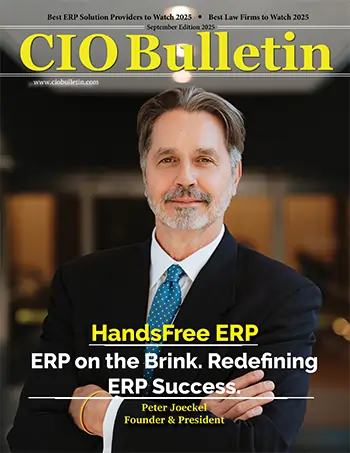Home Technology Blockchain How blockchain technology keep...
Blockchain

CIO Bulletin
13 September, 2025
The United States is experiencing a time when the volume, speed, and value of data are growing faster than the ability to protect it. More than $12.5 billion in losses due to fraud were reported by consumers last year, a 25% increase year-over-year, according to the Federal Trade Commission.
This development should drive companies to go beyond compliance and get to a more resilient architecture. On the regulatory side, the 2025 revision of the NIST Privacy Framework and CISA’s Cybersecurity Strategic Plan (FY2024-2026) both connect public policy to market-based practices to promote privacy-by-design, with verifiable data controls.
Using blockchain and recording transactions across multiple nodes reduces single points of failure and unauthorized changes. To illustrate, the U.S. Navy created its PARANOID system to verify the usability of files at each stage of the development cycle while employing an immutable ledger to detect improper editing, replacing, or deletion of its reachable code.
In practical terms, this enables audit trails that do not rely on blind trust in an internal repository. At the user level, the promise translates into less friction and more control over personal data in applications that process identity, payments, and preferences.
In online gaming and casinos, KYC and identity verification are often the biggest sticking points for new users. When the experience prioritizes privacy and fast withdrawals, crypto flows and self-custodial wallets help reduce steps and keep data control with the player.
In digital entertainment and gaming environments, the combination of self-custodial wallets, end-to-end encryption, and pseudonymization via blockchain allows people to enjoy anonymous play in “no KYC” or minimal verification scenarios.
This framework is detailed in the guide “Best No KYC Casinos: Play Instantly Without Verification in 2025,” by Djordje Todorovic, which describes when verification can be waived and the impacts on deposits, limits, and security.
In practice, custody remains with the user, and the operator applies transaction controls and risk monitoring instead of intrusive profiling. A report from IBM's “Cost of a Data Breach 2025” indicates that the average cost of a breach in the US exceeded $10 million.
This, with vectors such as third-party integrations and shadow AI, increasing exposure, verifiable controls, on-device AI models, such as Apple's privacy-focused ones on the iPhone, and deterministic data access segmentation (which blockchain helps to support), reduces detection and response times.
Recent cases illustrate the backdrop: from the supply chain attack that hit Salesforce integrations and exposed customer contacts to efforts by major platforms to adjust privacy practices in advertising.
The California Privacy Protection Agency (CPPA) took action against unregistered data brokers in 2024, and in 2025, the state announced a $1.55 million settlement with a major digital publisher for alleged violations.
For those implementing blockchain, the ability to prove who accessed what, when, and on what legal basis (and to record consents and purposes as immutable “events”) facilitates audits, access/deletion rights, and the principle of purpose limitation.
It is essential to note that the FTC itself has been signaling the urgency of strengthening defenses and reducing fraud surfaces, a scenario in which permissioned blockchains, integrated with IAM, signed logs, and tokenization, help close operational gaps.
In software security, the PARANOID experience demonstrates how immutability and distributed consensus increase the guarantee of integrity in the DevSecOps chain. In applied privacy, the adoption of data vaults and tokenization, which can anchor metadata on the blockchain, separates sensitive identifiers from the rest of the analytics flow, reducing the “blast radius” in incidents.
Going forward, technical and regulatory standards in the US are converging to require “proof,” not just policies. The NIST update in 2025 proposes explicit alignment between privacy controls and cybersecurity frameworks.
In turn, CISA encourages measurable innovation in critical sectors, and the application of CCPA/CPRA signals that auditable records and granular governance are competitive differentiators.







